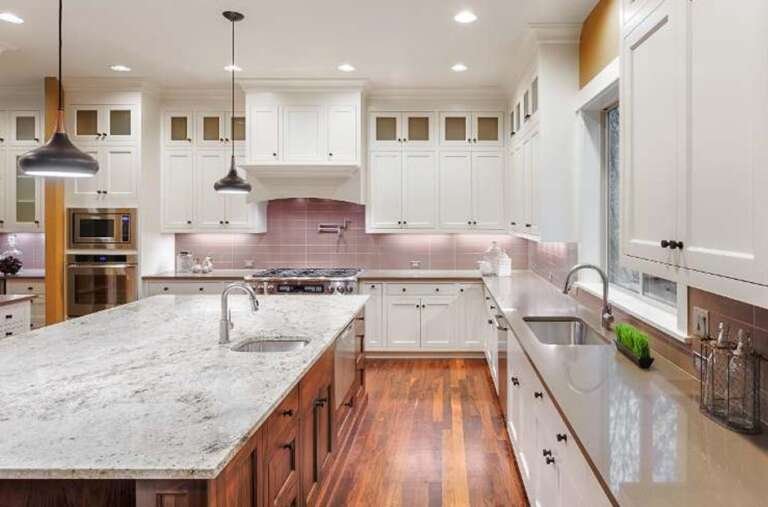Embarking on a roofing project necessitates a deep understanding of the contractual agreement made with a roofing contractor, exemplified by firms like D-ROC Renovations. The significance of a meticulously drafted contract extends beyond mere delineation of the project’s scope and expectations; it acts as a linchpin in protecting the interests of both the homeowner and the contractor. Such a contract serves as a comprehensive framework for the roofing endeavor, delineating each party’s responsibilities, and setting the stage for a successful collaboration.
It ensures that all facets of the project, from material specifications to timelines and payment terms, are clearly outlined and agreed upon, thus preventing potential disputes and misunderstandings. In essence, a well-constructed contract is crucial, as it underpins the clarity, commitment, and trust necessary for the smooth execution of the roofing project, fostering a positive and productive relationship between the homeowner and the contractor.
Introduction to Roofing Contracts
Roofing contracts are more than mere formalities; they are comprehensive agreements that lay the groundwork for a successful project execution. These documents are integral in establishing a clear, mutual understanding between the homeowner and the contractor, detailing the project’s scope, financial commitments, and legal obligations.
Companies like D-ROC Renovations, with their reputable standing in the industry, underscore the importance of these contracts in fostering a transparent and efficient collaboration. The contract acts as a roadmap, guiding the project through its various phases while addressing any uncertainties that may arise, thereby minimizing potential disputes and misunderstandings.
Key Components of a Roofing Contract
A roofing contract is detailed and multifaceted, encompassing several critical components. The scope of work is one of the most crucial elements, as it precisely defines what the project will entail. This includes the specific areas of the home to be roofed, the type of roofing materials to be used, and the extent of the necessary labor. By clearly outlining these details, the contract ensures that both the homeowner and the contractor have a shared understanding of the project’s breadth and limitations.
Equally important are the materials and labor specifications. The contract should list the types of materials to be used, their quality standards, and the qualifications of the laborers. This section is vital for ensuring that the work meets the homeowner’s expectations and industry standards. High-quality materials and skilled labor are pivotal for a durable and aesthetically pleasing roofing job, which is why reputable contractors like D-ROC Renovations commit to specifying these elements in their contracts.
Financial Terms and Conditions
Navigating the financial aspects of a roofing contract is fundamental. The pricing and payment schedule delineates the project’s total cost, including a breakdown of payments that correlate with the project’s milestones. This structure helps in managing the financial load, ensuring that payments are made in alignment with the work’s progress.
Warranties and guarantees are also a cornerstone of the financial terms, providing assurance of the work’s quality and durability. These guarantees protect the homeowner against potential defects in materials or workmanship, emphasizing the contractor’s commitment to quality and reliability.
Legal and Compliance Aspects
The legal and compliance sections of the contract are crucial for safeguarding both parties’ interests. They ensure that the contractor, like D-ROC Renovations, holds the necessary licenses, permits, and insurance, thus mitigating legal and financial risks associated with the construction work. These components also underscore the contractor’s legitimacy and reliability, fostering trust and confidence in their services.
Dispute resolution and termination clauses are included to address how conflicts will be managed, providing a clear mechanism for resolving issues that may arise during the project. These clauses are essential for maintaining a professional relationship between the homeowner and contractor, allowing for a structured approach to handling disputes and outlining the conditions under which the contract can be dissolved.
Finalizing the Agreement
The finalization of a roofing contract represents a crucial juncture in the home improvement process, necessitating a detailed review and negotiation to safeguard the homeowner’s interests. During this phase, prospective homeowners are advised to meticulously scrutinize each clause of the contract, ensuring every detail is understood and meets their expectations. Seeking clarification on ambiguous terms is essential to prevent future disputes and misunderstandings.
Negotiating the conditions to better align with the homeowner’s needs and expectations is not merely procedural but a strategic approach to ensure a fair and balanced agreement. This stage transcends the mere act of signing a document; it involves establishing a mutual understanding and crafting a solid foundation for the project’s execution. It’s about creating a partnership based on trust, transparency, and shared goals, ensuring that the project proceeds smoothly and results in a successful and satisfactory outcome for both parties.
Navigating a roofing contract involves a detailed understanding of its components, an appreciation of the financial and legal commitments entailed, and a clear agreement on the project’s scope and expectations. Companies like D-ROC Renovations, renowned for their integrity and professionalism, highlight the importance of a well-structured contract in achieving a successful roofing project. By carefully crafting and comprehensively understanding these contracts, homeowners can ensure that their roofing projects are executed smoothly, efficiently, and to their satisfaction, thereby safeguarding their investment and enhancing the value and durability of their homes.








